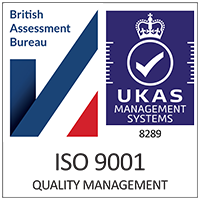The Provision and Use of Work Equipment Regulations 1998 (PUWER) are best known for their role in promoting workplace safety. But beyond preventing accidents, regular PUWER assessments also offer a clear financial benefit — helping businesses avoid unnecessary costs, downtime, and legal risk.
In this article, we explore how consistent PUWER compliance can lead to real savings and long-term operational efficiency.
What Is a PUWER Assessment?
A PUWER assessment is a formal inspection of any work equipment to ensure it is:
-
Suitable for its intended use
-
Safe to use and properly maintained
-
Operated by trained and authorised staff
-
Equipped with appropriate safety measures
The assessment identifies potential risks and ensures that employers are meeting their legal obligations under PUWER.
1. Avoiding Fines and Legal Costs
Failing to comply with PUWER can result in enforcement action by the Health and Safety Executive (HSE), including improvement notices, prohibition notices, and substantial fines. In more serious cases, there can be prosecution and even imprisonment.
Regular assessments help businesses stay compliant, reducing the risk of costly legal action. It’s a proactive investment that protects your bottom line as well as your workforce.
2. Reducing Workplace Accidents
Equipment-related incidents can result in injuries, medical costs, compensation claims, and loss of productivity. PUWER assessments help spot hazards early — such as faulty guards, worn components, or outdated safety controls — and ensure they’re addressed before an accident occurs.
Fewer accidents mean fewer disruptions, better staff morale, and reduced financial liability.
3. Lowering Maintenance and Repair Costs
Identifying wear and tear during a PUWER assessment allows for preventative maintenance rather than emergency repairs. This approach extends the lifespan of your equipment and reduces the chance of unexpected breakdowns that can halt production.
Planned maintenance is almost always more cost-effective than reactive repairs — and far less disruptive.
4. Minimising Downtime
Unexpected equipment failures can bring operations to a standstill, especially if replacement parts or repairs take time. By identifying and resolving issues early, PUWER assessments help keep machinery running smoothly and reduce unplanned downtime.
This translates directly into improved output, better time management, and more reliable delivery to customers.
5. Supporting Insurance and Risk Management
Insurance providers often take a company’s health and safety record into account when setting premiums. Businesses that regularly carry out PUWER assessments and maintain strong safety records are more likely to benefit from:
-
Lower insurance premiums
-
Fewer claims
-
Improved coverage options
Good compliance demonstrates strong risk management and reduces exposure to liability.
6. Enhancing Operational Efficiency
Regular assessments promote a culture of safety and efficiency. Equipment that is regularly reviewed and well maintained performs better, is less prone to breakdown, and is easier for operators to use confidently and correctly.
Improved efficiency leads to better resource planning and reduced waste — all of which save money over time.
Final Thoughts
While PUWER compliance is a legal obligation, it’s also a smart business strategy. Regular assessments help avoid fines, reduce accidents, cut maintenance costs, and boost operational efficiency. The result is a safer workplace — and a healthier bottom line.
At SIS Ltd, we provide thorough PUWER inspections and practical advice tailored to your industry. Whether you need a one-off assessment or a rolling programme of support, our experienced engineer surveyors can help you stay compliant and cost-effective.
Ready to schedule a PUWER assessment? Contact SIS Ltd today to protect your people, your equipment, and your profits.











